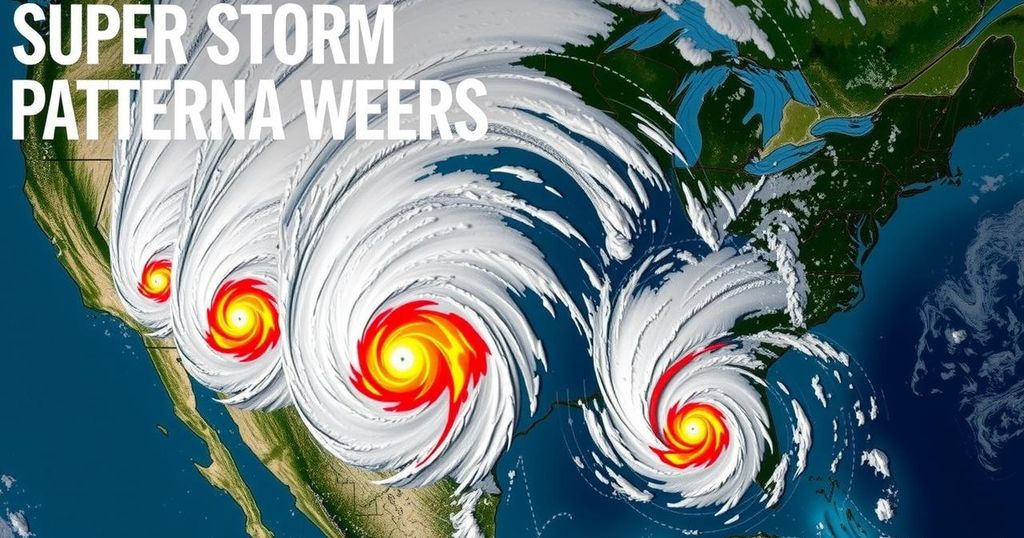Hurricane Alley refers to a region in the Atlantic Ocean where hurricanes frequently form due to warm waters. This area extends from Central America to Northern Africa, coinciding with hurricane season from June to November. Only a small fraction of storms make landfall, yet coastal areas remain vulnerable. Monitoring and forecasting efforts by NOAA are crucial for mitigating risks associated with these powerful storms.
Hurricane Alley is a dynamic region situated within the Atlantic Ocean, where conditions favor the frequent formation of hurricanes. Unlike Tornado Alley, which is a designated land area in the United States characterized by numerous tornado occurrences, Hurricane Alley refers to an expanse of the ocean that extends from the eastern coast of Central America, encompassing the Gulf of Mexico, and stretching to the western coast of Northern Africa. This region’s warm waters, particularly those exceeding 82 degrees Fahrenheit, are critical for hurricane genesis, primarily from June through November.
Hurricanes, scientifically termed tropical cyclones, must achieve maximum sustained wind speeds of 74 MPH to be officially classified as such. These severe storms are categorized based on their wind speed and the extent of potential damage they might cause, with a Category 5 hurricane recognized for winds exceeding 157 MPH, resulting in catastrophic destruction. Scientists have noted that the conditions in regions such as the Gulf of Mexico and the Atlantic Ocean have led to unprecedented water temperatures, which in turn drive the intensity and frequency of hurricanes.
It is important to acknowledge that while numerous hurricanes form in this area, only a fraction actually make landfall. The average Atlantic hurricane season sees about 23 storms, with only two typically impacting the U.S. coastline annually. Nonetheless, coastal communities, especially in states like Florida and Virginia, remain highly vulnerable due to geographical factors such as low elevation and coastal exposure. The peak of the Atlantic hurricane season corresponds with September 10, yet hurricanes can occur outside the designated hurricane season, demonstrating the unpredictable nature of these storms. Moreover, even hurricanes that stay offshore can pose significant threats, as evidenced by the chaos caused by Hurricane Debby in August 2024.
To mitigate the risks associated with hurricanes, the National Oceanic and Atmospheric Administration (NOAA) employs specialized teams, known as hurricane hunters, who actively track and study these powerful storms. As the climate continues to change, understanding the implications of hurricane activity and preparedness remains a critical concern for affected regions.
This article discusses the phenomenon of hurricanes, focusing on the region commonly referred to as Hurricane Alley. The term describes an expanse of the Atlantic Ocean where favorable conditions facilitate the formation of hurricanes, particularly during the warm months of June to November. Understanding the geographical and meteorological elements that contribute to hurricane activity is essential in grasping potential impacts on human life and the environment. This article also details hurricane categorization based on wind speed and the associated potential for damage, illustrating the hazardous nature of these storms and noting the importance of tracking and forecasting efforts led by NOAA.
In summary, Hurricane Alley is a critical region in the Atlantic Ocean known for producing hurricanes due to its warm waters and environmental conditions. While the majority of storms develop over this area, only a small percentage make landfall, with coastal cities remaining at heightened risk. Continuous advancements in monitoring and forecasting by organizations like NOAA play a vital role in understanding and mitigating the effects of hurricanes in this vital climatic region. Awareness and preparedness are essential to manage the risks linked with tropical cyclones as we advance into an era of climate volatility.
Original Source: www.thetravel.com






